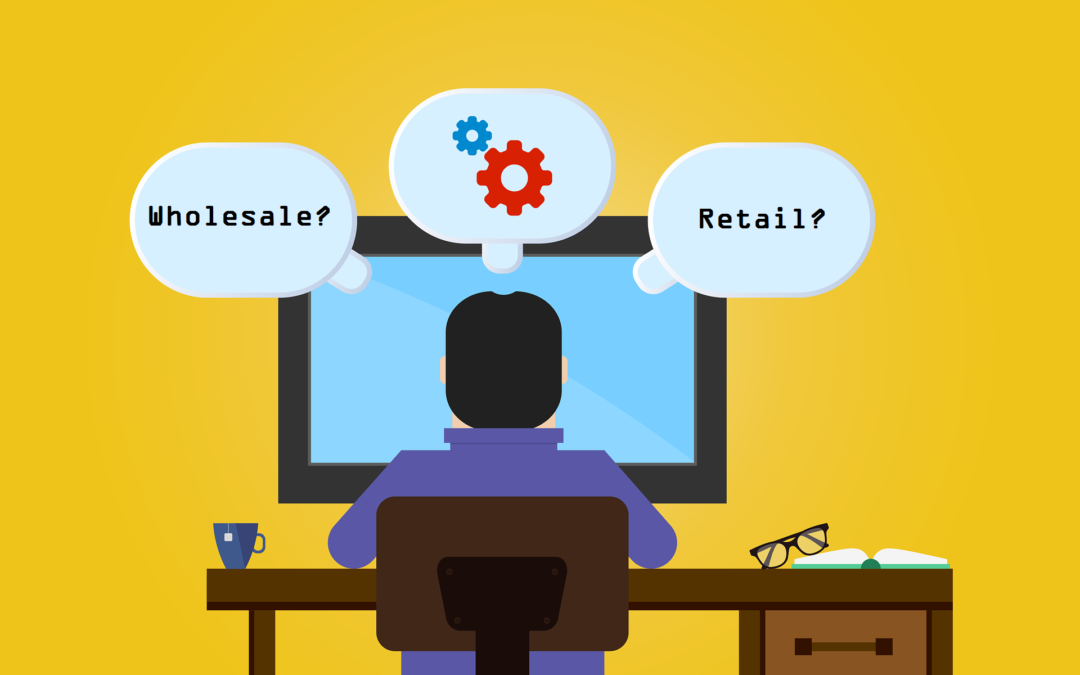For those of you who read my articles, you’ll note that I spend a lot of type talking about lockboxes in general, without regard for the various lockbox types most often encountered. And so for this article, I wanted to speak about the differences between a wholesale lockbox and a retail lockbox, so you’ll be adequately prepared for the very real risk of this coming up in casual conversation.
Wholesale lockbox is called ‘wholesale’ simply because, more often than not, the relationship is between one business (the biller) and another business (the bill payer). Some examples of wholesale lockbox relationships you might envision are a raw materials provider billing a finished goods manufacturer for materials, or a hospital billing a health insurance company for services rendered. Generally speaking, the volume of payments for a wholesale lockbox isn’t terribly high, but the dollar amounts of the payments can get quite large, given the B2B nature of the relationship. The composition of the payments the wholesale lockbox receives in are quite varied, and as such there isn’t much opportunity to build in any sort of automation to the accounts receivable process, so there is a fair amount of manual intervention on behalf of the lockbox service provider to process these payments. Wholesale lockboxes are quite easy to set up, since the lockbox customer typically handles the account reconciliation. They do so by cycling through images of all the transactions processed through the lockbox, which we make available to them via report or online access, and manually updating their accounts receivable as they go.
Retail lockbox is called ‘retail’ simply because, more often than not, the relationship is between a business (the biller) and an individual (the bill payer). Given this, you are most likely more familiar with retail lockbox payments in your daily life, such as a patient mailing in their hospital bill payment, a taxpayer paying their automobile excise tax, a consumer mailing in their credit card payment, or a tenant mailing in their HOA dues. In fact, any mail-based bill you receive that comes with a return envelope and a tear away payment coupon is, in all likelihood, going to a retail lockbox. Compared to a wholesale lockbox, the volume of payments in a retail lockbox is typically higher, but the relative dollar amounts are lower. With retail lockbox, the payments are pretty standard, since a pre-formatted payment coupon accompanies the payment in most cases. Consequently, there is a lot of opportunity for the lockbox service provider to automate account reconciliation, decreasing the AR burden on the lockbox customer.
How, you might ask, is account reconciliation automated? Well at the bottom of that tear-away payment coupon is a line of numbers in black, typically in a computerized looking font. That line of numbers is called a scanline and is very important for a lockbox service provider. If you take a very close look at a scanline for a bill you currently have in your possession, you might be surprised to discover you can pick out ranges of numbers in the scanline that correspond to data points on the bill, such as your account number, your amount due, or the due date. As you might guess, when a lockbox provider receives a payment coupon with a check, they scan that line of numbers and attribute that payment to the proper account number based on what is read from the scanline. They’re also able to tell if you’re overpaying, underpaying or paying the exact amount due by comparing the check amount with the amount due embedded in the scanline. All of this information is included in a batch file, which is sent to the biller every day to update their accounts receivable automatically.
Regardless of the lockbox type, in all cases they are electronically depositing the checks received to the Bank via an Image Deposit (Cash Letter) every day; something I wrote about in a prior article. Lastly, I should point out that in practice, the choices aren’t as binary as I describe here, and in fact the spectrum between wholesale and retail is actually quite robust. It’s not uncommon to see lockbox customers all along that spectrum, as they might start out as a basic wholesale lockbox, and then migrate to a more automated solution they get more sophisticated with billing, or they process both B2C and B2B payments simultaneously, for different reasons. Often these are referred to as ‘Wholetail’ lockboxes.
So there you have it! As you might imagine, at Lighthouse Payment Services, we’re always up for espousing the merits of lockboxes, so if you’d like to learn more, then give us a call!

